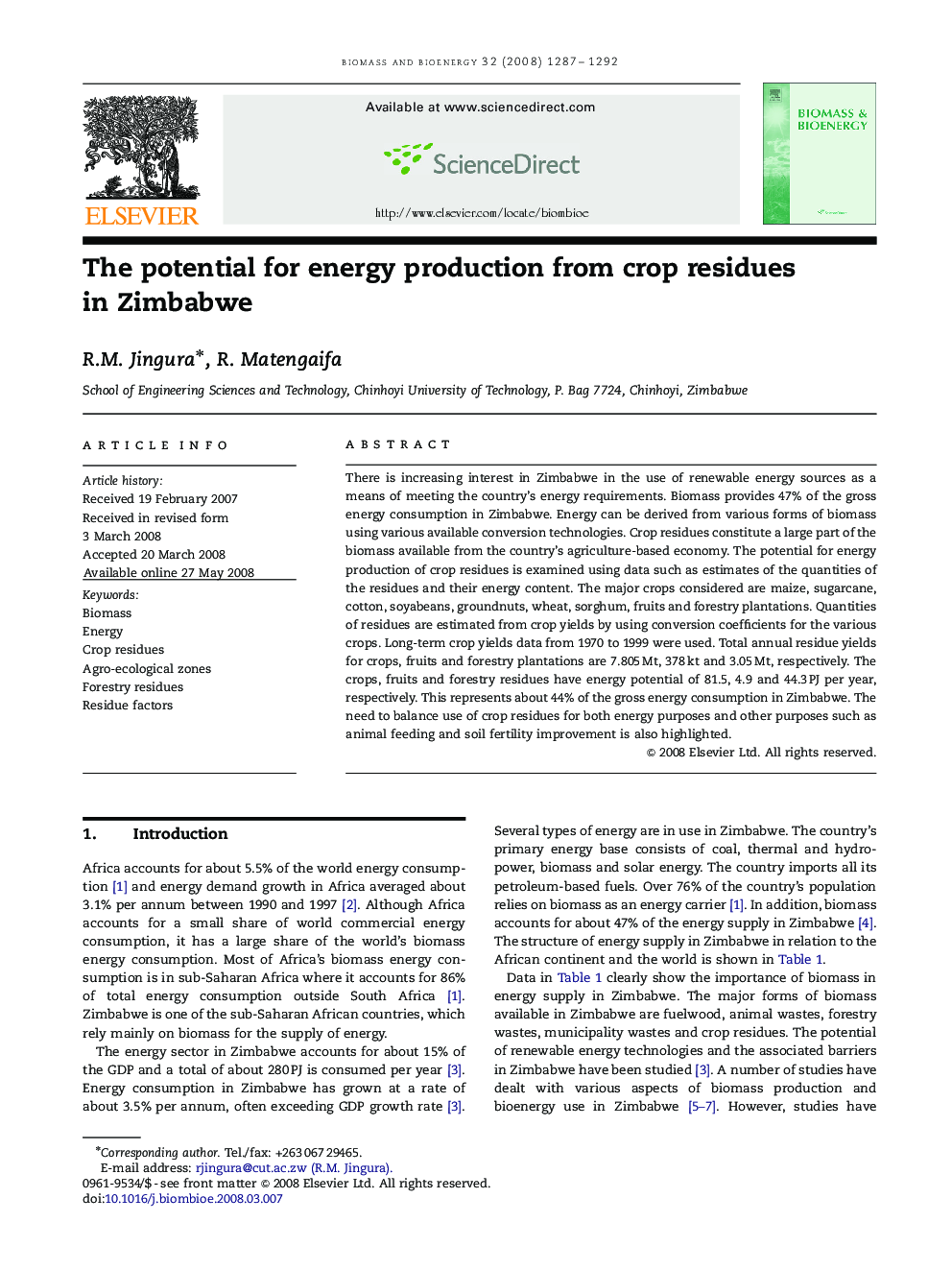| Article ID | Journal | Published Year | Pages | File Type |
|---|---|---|---|---|
| 678778 | Biomass and Bioenergy | 2008 | 6 Pages |
There is increasing interest in Zimbabwe in the use of renewable energy sources as a means of meeting the country's energy requirements. Biomass provides 47% of the gross energy consumption in Zimbabwe. Energy can be derived from various forms of biomass using various available conversion technologies. Crop residues constitute a large part of the biomass available from the country's agriculture-based economy. The potential for energy production of crop residues is examined using data such as estimates of the quantities of the residues and their energy content. The major crops considered are maize, sugarcane, cotton, soyabeans, groundnuts, wheat, sorghum, fruits and forestry plantations. Quantities of residues are estimated from crop yields by using conversion coefficients for the various crops. Long-term crop yields data from 1970 to 1999 were used. Total annual residue yields for crops, fruits and forestry plantations are 7.805 Mt, 378 kt and 3.05 Mt, respectively. The crops, fruits and forestry residues have energy potential of 81.5, 4.9 and 44.3 PJ per year, respectively. This represents about 44% of the gross energy consumption in Zimbabwe. The need to balance use of crop residues for both energy purposes and other purposes such as animal feeding and soil fertility improvement is also highlighted.
